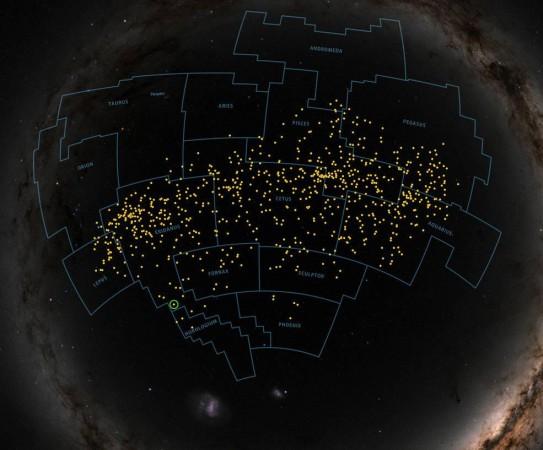Using observations from NASA's Transiting Exoplanet Survey Satellite (TESS), an international team of astronomers has discovered a trio of hot worlds larger than Earth orbiting a much younger version of our Sun called TOI 451, which resides in the recently discovered Pisces-Eridanus stream.
The Pisces-Eridanus stream is a collection of stars less than 3% the age of our solar system that stretches across one-third of the sky. The researchers believe that the newly discovered planetary system, detailed in The Astronomical Journal, helps in the study of growing planets.
The planets were discovered in images taken by NASA's Transiting Exoplanet Survey Satellite (TESS) between October and December 2018. It shows that TOI 451 likely has two distant stellar companions circling each other far beyond the planets.

Follow-up studies included observations made in 2019 and 2020 using NASA's Spitzer Space Telescope, which has since been retired, as well as many ground-based facilities. Archival infrared data from NASA's Near-Earth Object Wide-Field Infrared Survey Explorer (NEOWISE) satellite suggests the system retains a cool disk of dust and rocky debris.
Testing new theories
Lead researcher Elisabeth Newton, Assistant Professor at Dartmouth College in Hanover, New Hampshire, said, "It's only 120 million years old and just 400 light-years away, allowing detailed observations of this young planetary system... and they make especially promising targets for testing theories about how planetary atmospheres evolve."
The young star TOI 451, better known to astronomers as CD-38 1467, lies about 400 light-years away in the constellation Eridanus. It has 95 per cent of our Sun's mass, but it is 12 per cent smaller, slightly cooler, and emits 35 per cent less energy. TOI 451 rotates every 5.1 days, which is more than five times faster than the Sun. TOI 451b orbits every 1.9 days, is about 1.9 times Earth's size, and its estimated mass ranges from two to 12 times Earth's.
Hot and inhospitable
However, even TOI 451's most distant planet orbits three times closer than Mercury ever approaches to the Sun, so all of these worlds are quite hot and inhospitable with temperature estimates ranging from about 1,200 degrees Celsius inside and about 450 degrees C outside.

"By measuring starlight penetrating a planet's atmosphere at different wavelengths, we can infer its chemical composition and the presence of clouds or high-altitude hazes," said Elisa Quintana, an astrophysicist at NASA's Goddard Space Flight Center in Greenbelt, Maryland. "TOI 451's planets offer excellent targets for such studies with Hubble and the upcoming James Webb Space Telescope."
Observations from WISE show that the system is unusually bright in infrared light, which is invisible to human eyes, at wavelengths of 12 and 24 micrometers. This suggests the presence of a debris disk, where rocky asteroid-like bodies collide and grind themselves to dust.
The researchers also investigated a faint neighboring star that appears about two pixels away from TOI 451 in TESS images. Based on Gaia data, Newton's team determined this star to be a gravitationally bound companion located so far from TOI 451 that its light takes 27 days to get there. In fact, the researchers think the companion is likely a binary system of two M-type dwarf stars, each with about 45% of the Sun's mass and emitting only 2% of its energy.

















